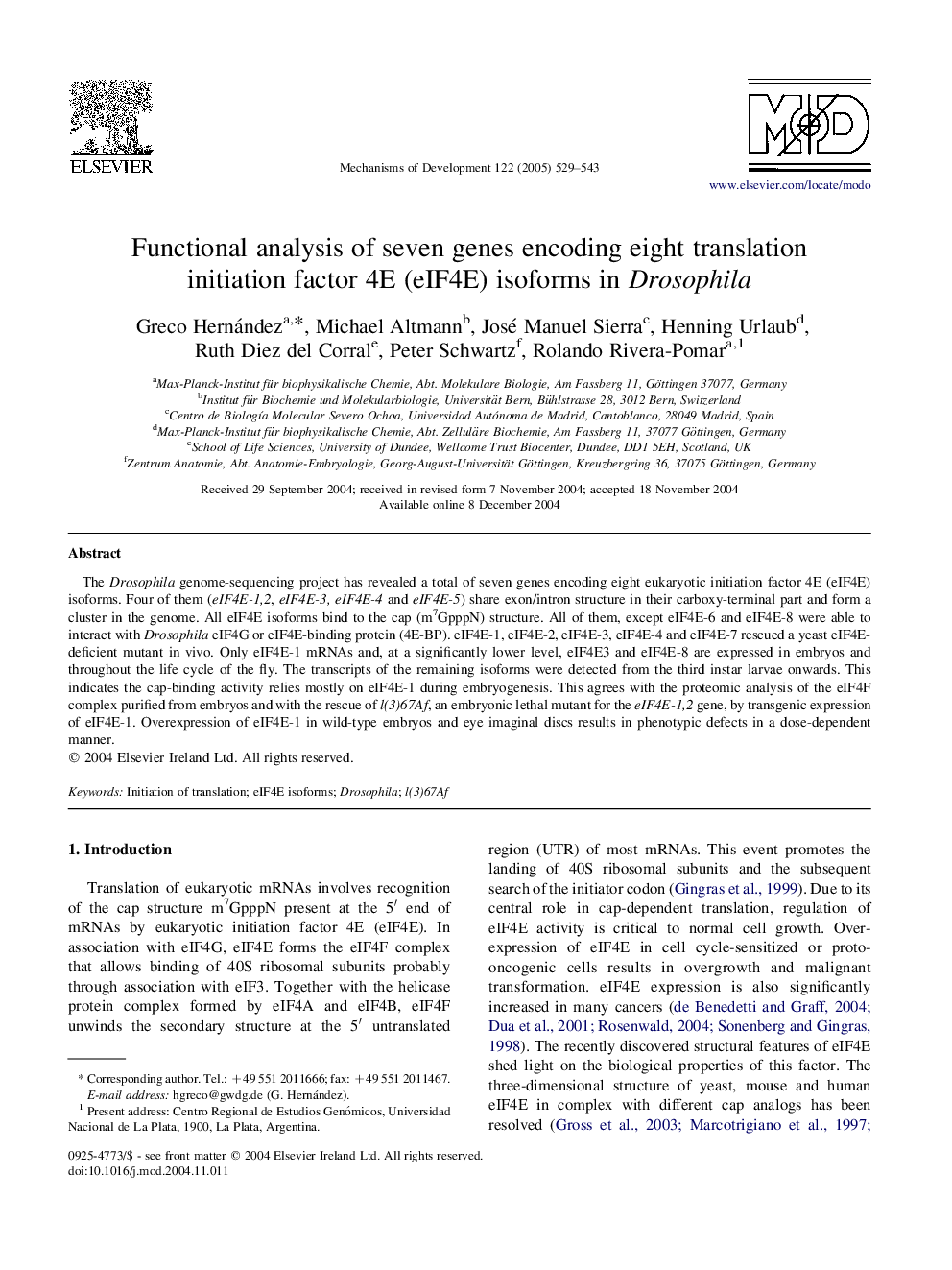| Article ID | Journal | Published Year | Pages | File Type |
|---|---|---|---|---|
| 9913666 | Mechanisms of Development | 2005 | 15 Pages |
Abstract
The Drosophila genome-sequencing project has revealed a total of seven genes encoding eight eukaryotic initiation factor 4E (eIF4E) isoforms. Four of them (eIF4E-1,2, eIF4E-3, eIF4E-4 and eIF4E-5) share exon/intron structure in their carboxy-terminal part and form a cluster in the genome. All eIF4E isoforms bind to the cap (m7GpppN) structure. All of them, except eIF4E-6 and eIF4E-8 were able to interact with Drosophila eIF4G or eIF4E-binding protein (4E-BP). eIF4E-1, eIF4E-2, eIF4E-3, eIF4E-4 and eIF4E-7 rescued a yeast eIF4E-deficient mutant in vivo. Only eIF4E-1 mRNAs and, at a significantly lower level, eIF4E3 and eIF4E-8 are expressed in embryos and throughout the life cycle of the fly. The transcripts of the remaining isoforms were detected from the third instar larvae onwards. This indicates the cap-binding activity relies mostly on eIF4E-1 during embryogenesis. This agrees with the proteomic analysis of the eIF4F complex purified from embryos and with the rescue of l(3)67Af, an embryonic lethal mutant for the eIF4E-1,2 gene, by transgenic expression of eIF4E-1. Overexpression of eIF4E-1 in wild-type embryos and eye imaginal discs results in phenotypic defects in a dose-dependent manner.
Keywords
Related Topics
Life Sciences
Biochemistry, Genetics and Molecular Biology
Cell Biology
Authors
Greco Hernández, Michael Altmann, José Manuel Sierra, Henning Urlaub, Ruth Diez del Corral, Peter Schwartz, Rolando Rivera-Pomar,
